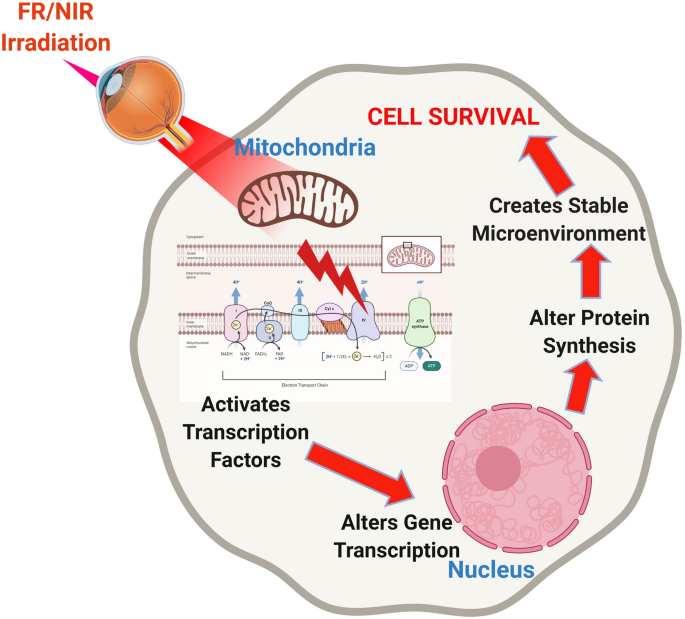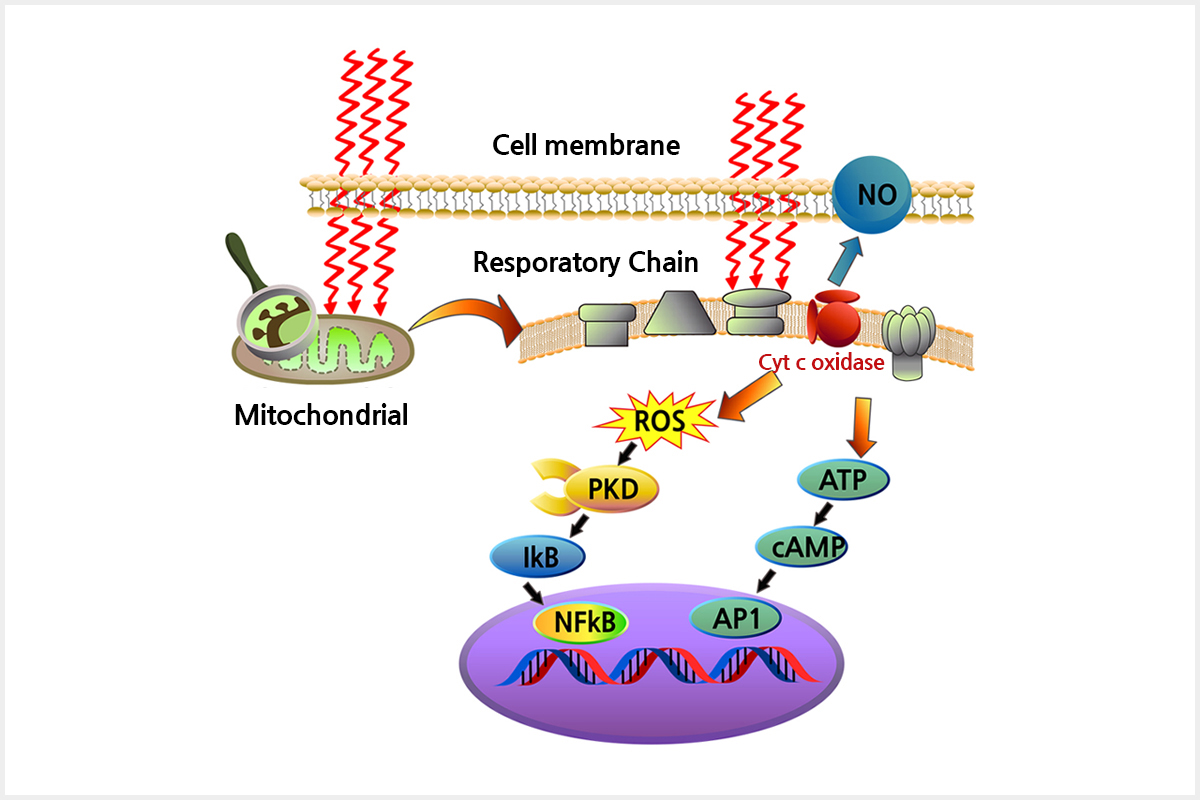The 10-Minute Rule for Photobiomodulation
Wiki Article
3 Simple Techniques For Photobiomodulation
Table of ContentsThe smart Trick of Photobiomodulation That Nobody is DiscussingThe Ultimate Guide To PhotobiomodulationThe Basic Principles Of Photobiomodulation The Single Strategy To Use For Photobiomodulation
Laser treatment is a clinical treatment that makes use of concentrated light to boost a process called. During PBM, photons go into the cells and interact with the cytochrome c facility within mitochondria. This interaction triggers an organic cascade of events that leads to an increase in cellular metabolism, which can in addition to increase the recovery procedure.There is agreement that the application of a therapeutic dosage of light to impaired or dysfunctional cells results in a mobile action mediated by mitochondrial systems. Photobiomodulation. Researches have actually shown that these changes can affect discomfort and swelling, in addition to, cells fixing
Modifications in ATP, reactive oxygen varieties and nitric oxide adhere to light absorption by Cc, O. These results are redox state and dose dependent. In hypoxic or otherwise stressed out cells it has actually been shown lots of times that complying with, nitric oxide is launched, ATP is enhanced and oxidative stress and anxiety is reduced [27-31]

Our Photobiomodulation PDFs
PBM tools have been gotten rid of for advertising and marketing by FDA with the Premarket Notification/510( k) procedure as adjunctive tools for the temporary alleviation of discomfort. These clearances were based on the presentation of clinical information to support such claims (Photobiomodulation). In this therapy, a light source is positioned near or touching the skin, permitting the light power (photons) to penetrate cells where it communicates with chromophores found in cells leading to photophysical and photochemical modifications that lead to alterations at the molecular, cellular and cells levels of the bodySurprisingly, current research suggests that light can enhance efficiency in regular tissues and cells. The possible applications of PBMT are countless and are being explored experimentally at the standard science, pre-clinical and medical degree. The current scientific usages are for the relief of pain and inflammation and the treatment of sports injuries.

The therapy parameters and number of sessions needed for PBMT depend on location and reason. PBMT normally calls for even more than one treatment for optimal discomfort alleviation. It might take numerous therapies for the results to become evident. records that it can take anywhere from 8 to 30 sessions for a treatment to be fully effective, and some people locate it needed to undertake treatment two to 4 times each week.
9 Easy Facts About Photobiomodulation Described
Therapy specifications for PBMT were originally developed making use of cells artificial insemination and in little animal models. These treatment criteria normally had a reduced irradiance and fluence and worked well for cutaneous applications. When clinicians began to make use of PBMT to deal with structures that were located deeper in the body, they made use of these parameters with unfavorable results.
We now understand that these her latest blog adverse studies link resulted from wrong gadget and therapy parameters for transcutaneous treatment of much deeper structures. Recent advances in laser treatment gadgets and even more research study into the proper dosages have drastically enhanced the outcomes of PBMT. For dealing with deep cells, the wavelength of light utilized determines the depth of infiltration right into a cells.
It is important that a medical professional utilizes the appropriate wavelength of light and parameters to deal with a condition. One wavelength and one collection of treatment specifications will certainly not be reliable for all problems. Adverse side effects have actually not been reported from the use of PBMT.
The Best Strategy To Use For Photobiomodulation
In the first experiment, Dr. Endre Mester, used cut rats and observing just how the laser affected their capacity to grow hair compared to the team that was not receiving LLLT. He found that the team of mice obtaining LLLT were able to grow their hair back faster than the group of mice that didn't obtain LLLT (Hoon C, et alia; 2012).This treatment is termed this way to set apart the distinction between the lasers some occupations use to cut (eg. Low-level light therapy is painless, non-invasive therapy.
LLLT has a biphasic response, implying that lower dosages are usually attended be more valuable than higher doses. That being stated, dosages higher or less than the optimal dosage over at this website does not influence (Hoon C, et al; 2012). For this factor, it can be difficult to have research studies on LLLT with numerous specifications.
Some firms combined both (LED and laser) to give an extra all-round treatment given that lasers can pass through deeper than LED and infrared light (Norman Doidge, The Brain's Method of Healing, 2015). During treatment, the area that is being treated is exposed to LED light from a Bio, Flex Laser, which goes to 660 nm wavelength, complied with by infrared light at 830-840 nm wavelength.
Report this wiki page